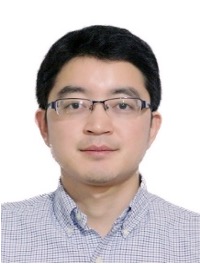Simple Descriptor Derived from
Symbolic Regression Accelerating the Discovery of New Perovskite Catalysts
Wan-Jian
Yin*
School of
Energy, Soochow Institute for Energy and Materials InnovationS (SIEMIS),
Soochow University
ABSTRACT: Descriptor
is a simple scale to describe complex phenomena. In the field of catalysis,
scientists have been searching for simple and accurate descriptors for decades,
trying to quantitatively describe complex catalytic phenomena. These
descriptors are based on the physical and chemical properties of the material,
and the representative ones are free energy, d-band center, etc.
Although they provide important guidance for understanding and designing
catalytic materials, they all require precise experimental measurements or
density functional theory (DFT) calculations, which are time-consuming and
labor-intensive, and are not conducive to the high-throughput design and
screening of materials.
In
this report, we take the oxygen evolution reaction of oxide perovskite as an
example, propose the use of symbol regression machine learning method [1], skip
the DFT calculation, directly establish the catalytic activity and simple
material parameters (chemical ratio, ionic radius, Electronegativity, valence,
number of transition metal ions d electrons, etc.) structure-activity
relationship, found a new descriptor μ/t for oxygen evolution
reaction. Based on this, the material design was carried out, 13 kinds of
materials were selected from more than 3000 kinds of materials, and 5 kinds of
materials were successfully synthesized in the experiment. Among them, the
catalytic activities of 4 new materials (Cs0.4La0.6Mn0.25Co0.75O3,
Cs0.3La0.7NiO3, SrNi0.75Co0.25O3
and Sr0.25Ba0.75NiO3) are higher than the
typical oxide perovskite catalyst BSCF, of which Cs-based oxide perovskite was
reported for the first time as a catalyst for oxygen evolution reaction.
Keywords: Symbolic Regression; Machine Learning; Perovskites; Catalysis

Wan-Jian Yin is a professor in Soochow Institute for Energy and Materials InnovationS (SIEMIS) in Soochow University, China. He received his BS (2004) and PhD (2009) from Fudan University, China. He worked at the National Renewable Energy Laboratory (NREL) and University of Toledo, USA from 2009 to 2015. His research interests include computational study of solar energy materials, defect physics in semiconductors and machine-learning on material design. He has published more than 100 papers, including Nat. Comm., JACS, Adv. Mater., PRL, EES as leading authors, which have more than 7,000 citations.